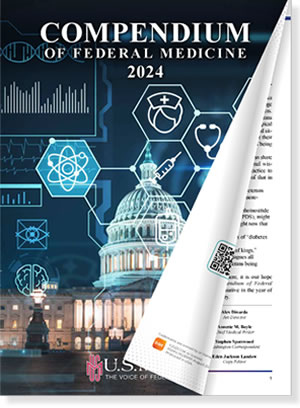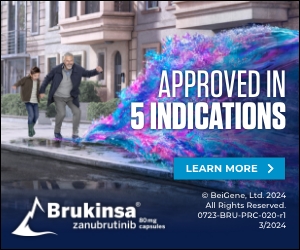Problems Attributed to Transition Issues with New Product Formulary
By Sandra Basu
WASHINGTON—In response to complaints that clinicians at VAMCs lack adequate medical and surgical products to care for veterans, VA conceded it needs to make its product formulary more robust.
“We don’t have as efficient of a supply chain as we need right now,” acknowledged VHA Acting Chief Procurement and Logistics Officer Rick Lemmon.

Some procedures might have been delayed because of product supply problems, VA officials said. VA photo
Lemmon made his comments at a hearing held last month in response to a Government Accountability Office (GAO) report finding that a revamped medical product formulary adopted as part of VA’s new Medical Surgical Prime Vendor-Next Generation (MSPV-NG) program does not provide everything that medical centers require.
While Lemmon pointed out that “hospitals have ways to get the products they need,” he said VA needs to “make it easier for them to get the products and assure taxpayers are getting good value.”
Lawmakers expressed concern about how this was affecting patient care. Rep. Brad Wenstrup, DO, (R-OH), a doctor of podiatric medicine, linked the issue to the retention of medical professionals.
“If you come in and you want to take care of veterans, but your hands are tied because you can’t get the things you need to take care of them in the best way you know how, … then guess what? You leave, because your name is on the line,” Wenstrup described.
GAO’s recent report noted that VA launched MSPV-NG in 2016 to replace its legacy program. The older program had “prevented VHA from standardizing items used across its medical centers and affected its ability to leverage its buying power to achieve greater cost avoidance,” the GAO explained.
The report noted, however, that “VHA lacked a documented program strategy, leadership stability, and workforce capacity for the transition that, if in place, could have facilitated buy-in for the change throughout the organization.”
Among the problems cited was that, while the new program was designed to streamline the purchasing of medical devices at the VA, as of June 2017, only about a third of the items on the initial version of the formulary “were being ordered in any significant quantity by medical centers, indicating that many items on the formulary were not those that are needed by medical centers.”
One of the problems that GAO found was that VA relied on data from previous clinician purchases to determine the initial formulary instead of surveying medical staff. VA determined that this “would be a good representation of medical centers’ needs and that clinician input would not be required for identifying which items to include in the initial formulary,” the report explained.
Clinician Input
Using purchase data to develop the formulary rather than clinician input “stood in sharp contrast to those of the leading hospital networks we met with, which rely heavily on clinician input,” according to report authors.
GAO explained that, “instead of fully using MSPV-NG,” the medical centers it reviewed “are purchasing many items through other means, such as purchase cards or new contracts awarded by their local contracting office, in part, because they said the formulary does not meet their needs.”
While VA has increased the level of input from the doctors and nurses at VA’s individual medical facilities since the initial formulary was developed, but the report noted that “the agency continues to face challenges that prevent the program from fully achieving its goals.”
Shelby Oakley, GAO director of acquisition and sourcing management, also testified that VA needs to outline a way for how new products will be added to the formulary as it evolves.
“One of the things we recommended, because the formulary is a living, breathing thing, is laying out how does one working-level physician go about getting something on the formulary, so they can actually have the things they need in their day to day life,” she said.
House Committee on Veterans’ Affairs Chairman Rep. Phil Roe (R-TN) said he had heard that surgical cases were cancelled at VAMCs because the needed supplies were not available at the hospital and asked if that was true. Lemmon responded that he would have to do some research to know for sure but said he believed a “very small number” of cases had been affected.
Rep. Jody Arrington (R-TX), meanwhile, suggested those types of problems increase the urgency of enhancing the Choice program, whereby veterans can opt for outside care. “We can’t do enough to give them more choice and flexibility to get out of this broken government-run single- payer healthcare system that they are trapped in,” he said.
Rep. Ann McLane Kuster (D-NH) added that the government had “swung and missed in a big way on this project, because not only have we put veterans’ care at risk, which is our first and foremost goal, it sounds to me we have also cost the taxpayers.”
Kuster and other Democrats on the committee questioned whether the hiring freeze instituted in early 2017 by the Trump administration had contributed to staffing shortages and instability in leadership in the MSPV-NG which GAO said contributed to the program’s problems.
Lemmon acknowledged that “there have been delays in hiring because of the [hiring] freeze.”
Rep. Mark Takano (D-CA) cautioned, however, that sending more veterans for medical care outside of VA is not the solution to the problem.
“I just want to make sure that we don’t rush to the conclusion or make the wrong conclusion from today’s testimony that the answer is to put everyone in the private sector, or that the choice program is somehow going to alleviate what is going on,” Takano noted. “What I heard today is that we have a lot of unfilled positions.”


